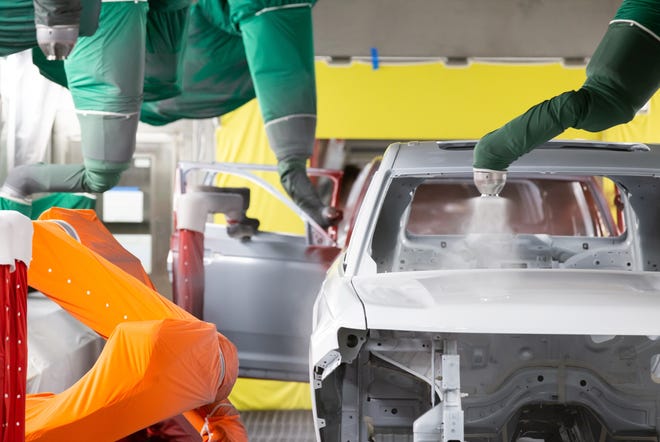Air sampling by the state of Michigan at the new Jeep plant in Detroit found a few pollutants that exceeded their odor thresholds and could be contributing to foul smells emanating from the plant.
Neighbors around the Mack Assembly Plant on the city’s east side have reported watering eyes, coughing and other symptoms from odors since operations began at the new paint shop at the former engine complex. The result has been six air-quality violations against Stellantis NV, which are being resolved through a consent order with the Michigan Department of Environment, Great Lakes and Energy. The automaker began production of the Jeep Grand Cherokee SUV there in the summer of 2021.

As a part of the consent order, Stellantis is installing in the paint shop a second regenerative thermal oxidizer that can destroy potentially harmful emissions and it hopes will address the odor issues. That must be ready for operation by June. The automaker also is paying for the installation of a new building management system at nearby Southeastern High School.
EGLE originally conducted sampling in June 2022 to determine which chemicals are causing the odors, but the samples from that collection were sent to the wrong lab. The sampling again was collected in early October using a few different methods.
That collection found three pollutants that at least at one sample site had a higher concentration than their odor threshold, which is the lowest concentration of a compound that is perceivable by human smell. They include benzaldehyde, ethylbenzene and one type of xylene. Exposure to these chemicals at varying levels can irritate the throat, nose and eyes; damage the nervous system; and even cause death, according to the Centers for Disease Control and Prevention.
“Concentrations above the typical ambient air level do not indicate a violation or health concern,” the EGLE report notes. “The highlighted chemicals, or the combination of them, may indicate that further investigation is warranted.”
The sampling also found nine other compounds that exceeded the concentrations at a similar site in Dearborn as to the Mack plant, which is one half of the Detroit Assembly Complex.
The report additionally notes sampling conducted immediately outside of the plant’s buildings could differ from the air exposed to the public and that several chemicals also can be found in urban ambient air, as well.
“Stellantis was pleased to receive the most recent EGLE testing report released today, which continues to support the conclusion that emissions from the DACM property do not pose an adverse impact on the neighboring community,” spokesperson Shawn Morgan said in a statement Thursday. “The results are consistent with prior emissions assessments and are within a typical range for an automobile painting facility.”
EGLE has shared the results with the automaker to identify odor sources and next steps are being identified and discussed.
bnoble@detroitnews.com
Twitter: @BreanaCNoble